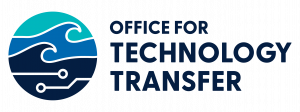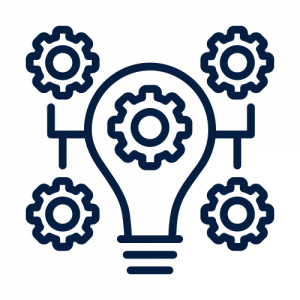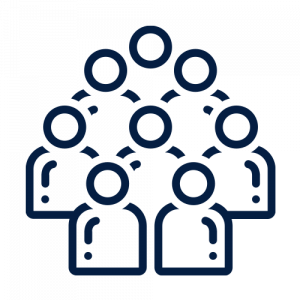Behind the Innovation: Q&A with WHOI Software Engineer, Mario Carloni
As part of the Information Services: Science and Engineering team at Woods Hole Oceanographic Institution, Mario Carloni is no stranger to managing complex datasets when it comes to oceanographic data. His experience ranges from developing network device registration apps to creating sensor broadcast relays for research vessels and managing over 500 data streams from globally deployed moorings for the Ocean Observatories Initiative in places like Greenland and the mid-Atlantic. Carloni identified a critical need for standardized oceanographic data processing through his research and interactions at WHOI.
ArcheSense, Carloni’s solution, addresses these challenges with a scalable platform that not only automates data processing but also ties calibration data to individual sensors. By linking data streams with their most recent calibration coefficients, ArcheSense ensures that researchers can work with accurate, reliable data without manual intervention. This capability, combined with its integration of CF metadata conventions and compatibility with NetCDF models, has positioned ArcheSense as a transformative tool for oceanographic research and beyond.
In our most recent Behind the Innovation Q&A, Mario talks with the Office for Technology Transfer about the work he’s doing to develop the ideal solution, his journey into entrepreneurship, and what he hopes for his technology in the future.
What inspired you to pursue entrepreneurship and innovation?
It was a combination of the projects I’ve been involved in, reading different market reports, and socio-economic research about local areas impacted by the incoming “Blue Wave,” modernization of aquaculture technology, and the use of sensor technology. I realized that scientists and engineers could make an impact in ocean tech, but I wasn’t sure how to get involved.
One of the surprising things I learned during my research is how many people are willing to help you and provide you with valuable information if you just ask. I’ve been very fortunate to connect with Norwegian venture capitalists, scientists, and sensor technology experts through the Office for Technology Transfer, both in person and virtually. Over time, you start to understand that there are global challenges surrounding a problem. Through the relationships I’ve built and conversations I’ve had, I was able to hear about different organizational issues pertaining to an area I knew about and working in. From that, I was able to identify a critical need and understand what people are looking for in solutions, which helped create ArcheSense.
These collaborations revealed inefficiencies in data standardization across industries, particularly aquaculture and climate monitoring. By addressing these pain points, ArcheSense emerged as a scalable solution capable of supporting a range of applications.
Can you tell me a little about your invention and how it comes out of your work at WHOI?
It grew from my professional background in software and application development, exposure to the challenges oceanographic researchers face, and the encouragement from the Office for Technology Transfer, which gave me the confidence to solidify what was at first a vague idea.
As I mentioned, I manage data streams for the Ocean Observatories Initiative, which involves a suite of algorithms that should work together in a system that won’t break if one of the algorithms fails, but that’s not the case. Managing data streams is challenging because of the ferocious variety of sensor data formats and trying to manage the complexity behind the scenes.
ArcheSense automates this process. It handles diverse log formats from instruments like Teledyne RDI ADCP and Satlantic SUNA, extracting key measurements such as salinity, temperature, and water velocity. Each sensor’s data is tied to its latest calibration coefficients, ensuring accuracy across datasets.
How do you see this technology having broad impact in real-world applications?
Industries that rely on sensor data, such as physical, meteorological, and biogeochemical, often face challenges due to sensor data variability. ArcheSense solves this by providing scalable, standardized outputs, enabling researchers and industry professionals to focus on analysis rather than manual data preparation.
What challenges did you encounter during the creation of this invention, and how did you overcome them?
Managing diverse data formats still needs close collaboration with stakeholders, as well as refining the current and future algorithms, and implementing changes based on continuous feedback to meet technical demands.
Incorporating calibration data posed its own hurdles. ArcheSense’s modular data model was designed to link each sensor’s data with its associated calibration coefficients, ensuring compatibility with new sensor types. Collaborating with WHOI researchers helped refine this process, enabling ArcheSense to adapt to evolving needs.
From your experience, what was that process of going out and having conversations with various stakeholders?
Once you establish that relationship and rapport, people are very enthusiastic about aiding science and innovation. It is during those second or third conversations that you can learn about the challenges people are facing and start to connect with more and more people. However, it is not always straightforward; oftentimes, different industries require different solutions. Obtaining validation requires putting in time and effort. Feedback from these conversations was critical in shaping ArcheSense. Discussions with researchers and industry revealed broader applications beyond oceanography, like aquaculture and environmental monitoring.
Can you share any lessons learned from your experience innovating?
Don’t hesitate to talk to people often. If the answers aren’t within your network, someone knows someone who might have the answer. By engaging with people, you’ll find that many have deep expertise and are likely willing to share it. Connections can provide huge insight, help shape your ideas, and validate if your approach is on track.
Have you faced any interesting or surprising moments during this process?
The whole process seemed daunting in the beginning, but the execution was pretty easy. You build a network of people who might know the path you’re travelling on and can prepare you along the way.


